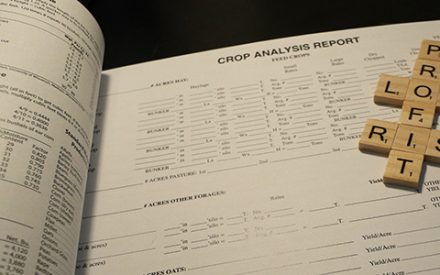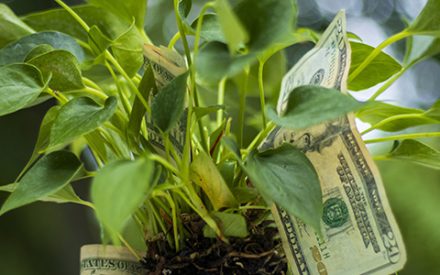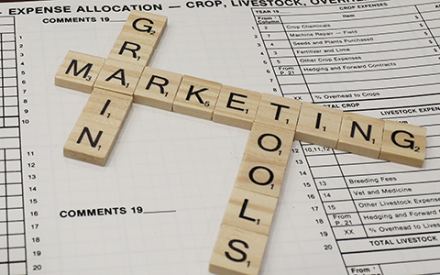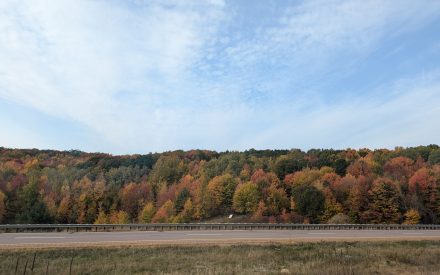Video Summary
Jason Cavadini, UW–Madison Extension grazing outreach specialist, provides a comprehensive checklist for spring grazing, aimed at optimizing forage production and extending the grazing season.
Jason discusses key considerations such as calculating stocking rates, renovating pastures, maintaining fences, and ensuring water systems are operational. The focus is on determining the right time to start grazing, tracking forage inventory, and keeping pastures vegetative for optimal forage intake. The video emphasizes the importance of using tools like grazing sticks to measure forage height and density and provides best practices for managed grazing to maximize intake and utilization.
Resources
- When can I start grazing?
- Should I clip my pasture?
- Using a grazing stick to create a pasture inventory
Transcript
0:05
All right.
0:05
Well, thanks, Liz.
0:08
The sun’s shining today, it sounds like across the entire state.
0:12
So it’s the perfect time to talk about some of the some of the spring considerations for grazing and getting the season off to a good start so we can graze as late into the year as possible.
0:30
So gonna just go through a couple of quick things here today that will be on spring grazing checklist.
0:39
So obviously there’s a lot of things on that list that need to be done in order to to get started in the spring.
0:48
Calculating stocking rates, plans for renovating pastures, maintaining fences, getting water systems up and running, animal care.
0:59
We’re not going to talk about a lot of those things, but what we’re going to focus on for a few minutes here is just the the forage base and what kind of things we need to do to ensure that we get the the most production out of that and that we can keep animals grazing as late into the growing season as possible.
1:18
So specifically what I’m going to talk about this afternoon is determining when to start grazing.
1:26
This is actually something that we maybe don’t always think about.
1:31
We tend to think, well, it looks like there’s enough out there, so let’s turn them out.
1:36
But I actually, if we start grazing a week too early, in some cases, we can cut a whole month off of the end of the grazing season.
1:44
So it’s really important to make sure we’re waiting until it’s it’s ready to start grazing.
1:51
One of the ways we do that is by knowing how to track our forage inventory.
1:55
So we’ll talk about that and then we’ll just talk about keeping pastures vegetative for optimal forage intake.
2:08
So we’ll start out with the probably the most important question, when should you start grazing?
2:14
There’s a few rules of thumb that we often throw out there.
2:18
So we should be able to see three to four leaves.
2:22
So this is really, really varies on the species.
2:27
So it’s hard to say, well, it should be 8 inches tall and you can start grazing because there’s such a variation and the species and the density and a lot of different factors.
2:40
But one of the first rules of thumb that we like to use is there should be at least three to four developed leaves on that plant indicating that it’s at a maturity that it can withstand being grazed off and then regrowing.
2:58
We want to shoot for about 10 to 20 days of available forage when there’s enough to flash graze.
3:06
So a flash grazing is a term that we use for just kind of topping it off and keeping the animals moving.
3:12
So this is really only going to work if we’re using rotational grazing or managed grazing practices.
3:22
So we basically want to let them take the top off and then keep them moving.
3:27
But we really don’t know.
3:29
We can’t know for certain unless we take a forage inventory.
3:34
So many of you have probably seen this is one side of a grazing stick which has four sides to it.
3:42
You’ve maybe seen these handed out at pasture walks or at winter grazing meetings.
3:51
And we have a resource available.
3:54
And actually I’m going to go to the previous slide just for a second.
3:58
This is a photo of a resource that we have available that walks you through how to use a grazing stick in much more detail than what I’m going to give you today.
4:09
You can access that with this QR code here, but I’m going to just give a, a real quick overview on how to use that.
4:17
And then in the next slide, I’ll tell you how to use that information to decide when to start grazing.
4:24
But really what we use as a grazing stick for is to know how much forage we currently have and then to know how many days of grazing that forage can provide.
4:34
So it isn’t as simple as just measuring the height and and knowing that obviously if we’ve got 10 inch tall plants, but there’s 10 inches between plants, that’s not very much forage.
4:49
And so density is really important.
4:51
So on the grazing stick, this information is on there where it’s predicting pounds of dry matter per inch per acre depending on the density.
5:03
And again, the publication I shared with you will walk you through how to estimate the density of that forage.
5:14
But then once we’ve got a height measurement and a density, we can use that information to figure out how much total forage is out on the pasture.
5:25
And then if we’re using managed grazing principles, which includes leaving behind residual, then we have to consider the fact that not all of that forage is available for grazing because we’re purposely leaving some behind.
5:40
So we subtract that residual out and then we estimate the amount of intake per animal depending on the weight, the average weight of the livestock that is grazing.
5:54
And we come up with available forage pounds of dry matter per acre per day and we can come up with an estimate.
6:03
So in this scenario that I’ve included here, one acre will feed 38 cows for a day or another way of looking at that is 1 acre will feed one cow for 38 days.
6:17
So this is the information that can help us make decisions.
6:22
In 2023 when we were going through the drought conditions, that helped us to have a little foresight to kind of look down the road and say, all right, we know things aren’t looking good.
6:33
How many days of grazing do we still have ahead of us and we could start making some decisions.
6:40
So how do we put this information into practice?
6:44
So for spring turn out, deciding when to start grazing, we have rapid growth this time of year up to 100 lbs of dry matter per acre per day.
6:55
So we want to know that we’ve got about 10 to 20 days of forage available before we can confidently start grazing.
7:03
We often talk about the summer slump, that’s when growth slows down to about 40 lbs of dry matter per acre per day.
7:11
We want to have about 30, at least 30 days, if not more, of available forage for grazing at that time of year.
7:23
We want to graze when the average forage height is twice the target residual height.
7:29
So at minimum, we want if if our target residual height is 4 inches, we want 8 inches of forage out there at minimum.
7:40
And then this can also help us to decide when we should harvest some parts of our pastures as well.
7:49
So then intake is so we, we know how much forage we have out there, but that forage is only good if we can get it into the animal.
8:02
And so intake is probably the most important forage quality metric and it’s actually not one that we often measure when we look at forage quality analysis.
8:14
Intake is influenced by the palatability of the forage, which is another way of saying how much livestock like it and are willing to eat it.
8:23
Often we use 4% of livestock body weight to predict intake.
8:29
It’s actually more like 3%.
8:31
But for grazing planning, we teach people to use 4% to factor in residual and times a year when their demand is more.
8:43
Consider that animal weights change across the season.
8:46
That’s another reason why we use 4%.
8:50
But dense vegetative pasture maximizes utilization and intake of that forage.
9:00
Here are some data from Jeff Brink from years ago at the Dairy Forage Research Center looking at the digestibility of different forages over time.
9:13
So we’ve got variation between species, and we’ve also got variation across time.
9:19
So it’s helpful to know how these species act across the grazing season, especially in terms of their digestibility, because if you look down here, you can look at how dry matter intake is influenced by digestibility.
9:39
So the more digestible it is, the more intake we have.
9:44
So why so much focus on intake?
9:49
Well, that’s because about 85% of what that animal eats goes toward maintenance.
9:57
In other words, they need 85% of that forage just to stay in the condition they’re in just to continue operating as usual.
10:08
So any, any growth they’re going to be doing, any gain for animals that we’re finishing needs to be in excess of that 85%.
10:19
So intake is extremely critical.
10:25
And you can see here how how much more they need to take in if we’re going to get a pound or 2 lbs per gain or a day of gain per day.
10:39
So there’s a lot of different ways that we can manage for intake.
10:42
But really what it comes down to is we need to really be focused on how to maximize the amount of days that that forage base is vegetative.
10:53
When it’s vegetative, we’re maximizing intake and utilization.
10:58
And there’s a lot of different ways we can do this.
11:01
We can use high density grazing.
11:04
This needs to be done very carefully so it’s not causing damage to the pastures and setting them back.
11:11
We can use high density grazing and moving them very frequently to trample mature forages, which will set everything back to vegetative for the remainder of the season.
11:26
When that’s not a great option, and there’s only so far that that can get us clipping perhaps 1/4 of acres or or a portion of the acres at least after they’ve been grazed the first or second time to remove seed heads that can set the forage back to vegetative.
11:48
And then because things grow so quickly and so abundantly early in the season, sometimes cutting a portion of those acres and harvesting as winter feed is a really good idea as well for setting these forages back to vegetative.
12:05
So really what this comes down to is it’s important to just remember how critical it is to have these forages in the vegetative stage as much as possible and to just think about management wise what things can be done to do that.
12:25
So I know that was very quick.
12:29
All of the things that I mentioned, we have resources that go into further detail on those at our website also found at this QR code here and that is what I’ve got to share today and I hope everybody has a good grazing season.
Badger Crop Connect
Timely Crop Updates for Wisconsin
Second and fourth Thursdays 12:30 – 1:30 p.m.
Live via Zoom

 ▶ Fall 2025 Financial Assistance for Producers
▶ Fall 2025 Financial Assistance for Producers ▶ Fall 2025 Ag Policy Update
▶ Fall 2025 Ag Policy Update ▶ Fall 2025 Corn and Soybean Market Outlook
▶ Fall 2025 Corn and Soybean Market Outlook ▶ November 6 Ag Weather Outlook for Wisconsin
▶ November 6 Ag Weather Outlook for Wisconsin


